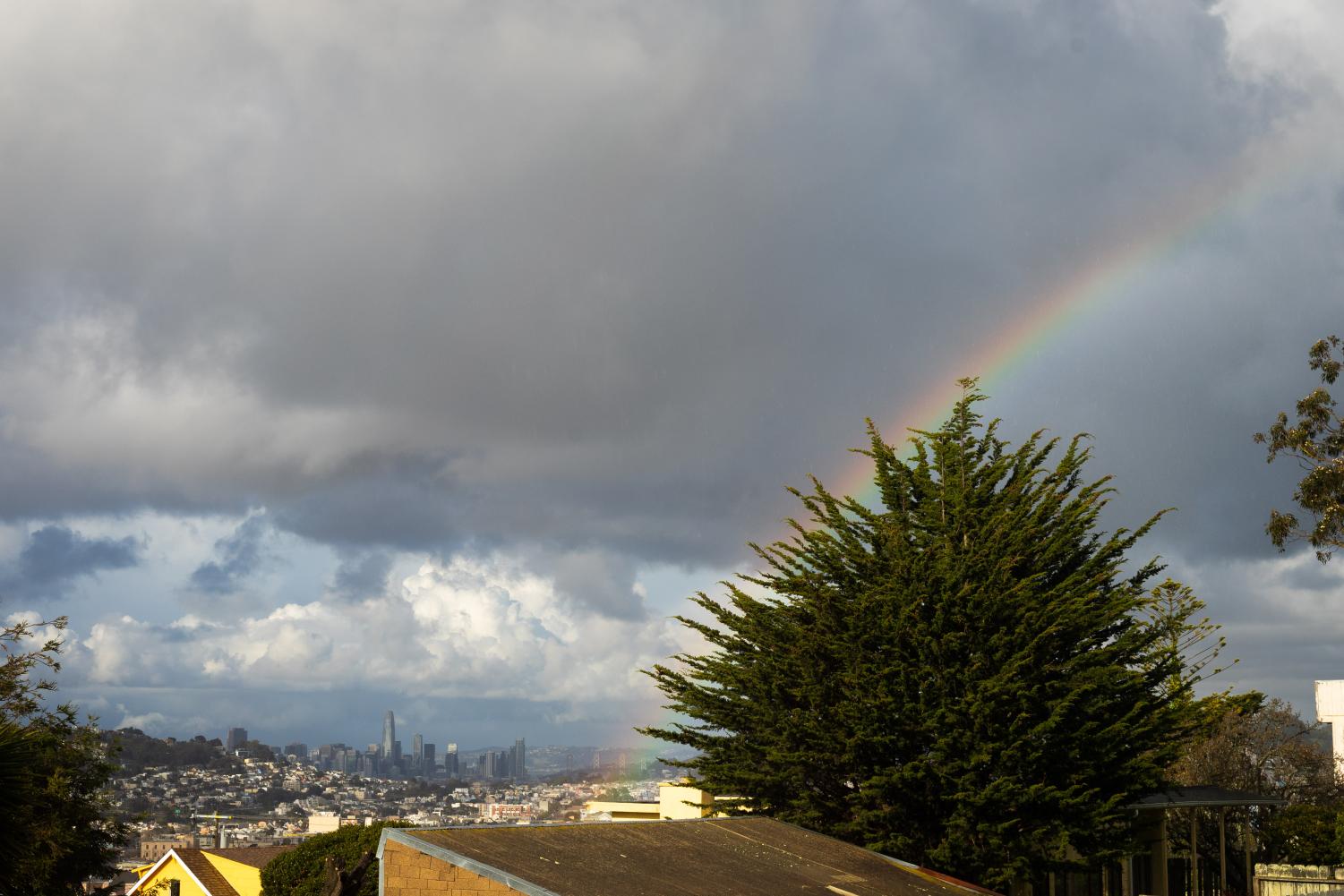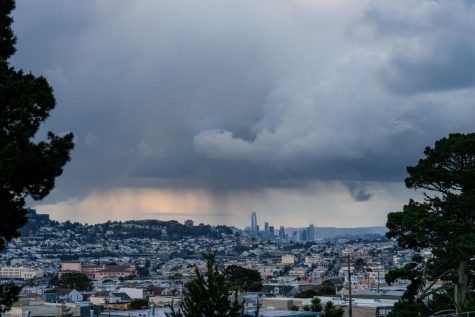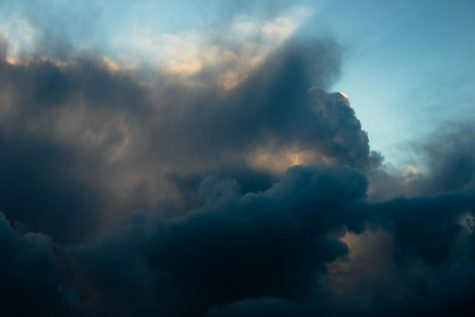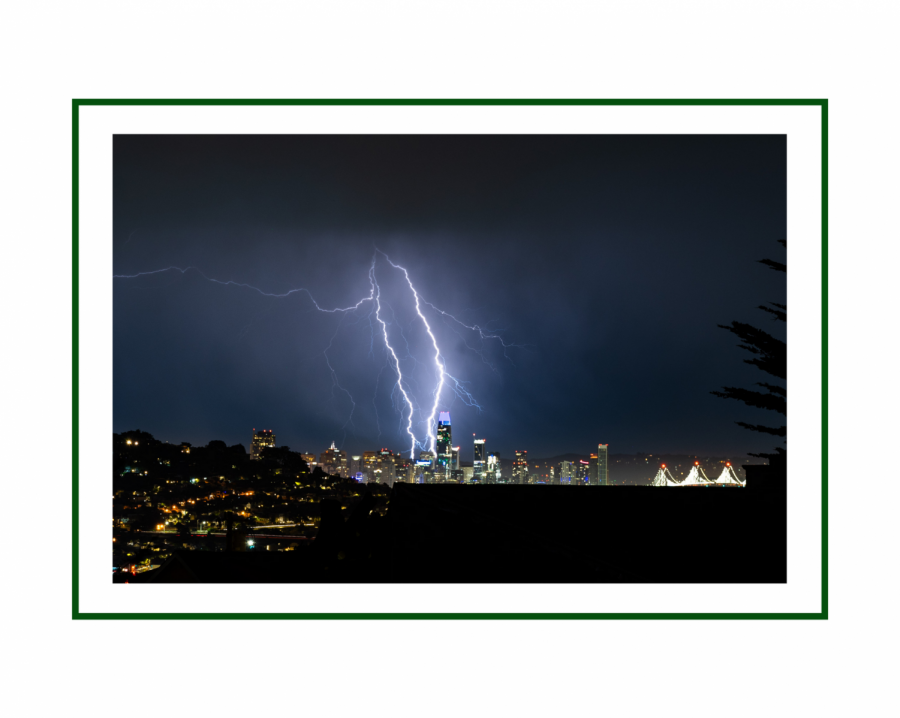Weather isn’t just sunshine and rainbows

The sky turns red. A mild climate freezes. A state goes dry. We may be helpless in the face of extreme weather, but we can do things to affect the climate that creates it.
Over the last year, California has seen red skies, evacuations and polluted air.
Many have lost their homes and lives due to the impact of severe natural disasters and some fear this might be the new norm for California as a result of climate change.
According to the California Department of Forestry and Fire Protection, in 2020 the Golden State was home to 8,112 fires along with more than 1 million acres burned. Compared to 2019, where 5,456 fires occurred and more than 137,000 acres burned.
So far in 2021, 717 fires have taken place, with only 1,541 acres burned. The most notable fire of 2020 was the August complex wildfire in Northern California reaching six counties and burning more than 1 million acres.
Malori Redman, a lecturer in the Environmental Studies department at San Francisco State University, speaks on California’s recent wildfire season and what a breakdown of climate change looks like.
“With concern here in California in particular, we just had the most destructive fire season we’ve had,” says Redman “Almost five million acres burned. And that’s in part due to these much drier conditions.”
According to CalFire, the 2020 California Wildfire season was considered a record-breaking year for wildfires.
Redman expressed that the current research and scientific theories suggest places with warm temperatures will continue to get hotter and wet areas will continue to get more rain, and humid places will continue to become drier.

The European Commission mentioned that human activity can be a source of change in the climate. A few examples of human activity are burning fossil fuels, over-farming livestock and the deforestation of land. Some of these activities can increase methane concentration, carbon dioxide, nitrous oxide and fluorinated gases. One way carbon dioxide can increase is by the process of burning coal, oil, and gas. Cutting down trees is a major factor in higher levels of carbon dioxide because they act as a sponge and absorb the carbon dioxide in the atmosphere.
Redman also included how extreme weather events such as wildfires can impact a person’s well-being and living situation.
“A severe weather event can rob you of so much. You have little to no time to prepare and to gather your things,” says Redman.
Some people may lose valuables such as necessary documentation, credit cards, passports and other personal belongings. Anything that is considered of emotional value can also be a massive loss for a person.
In 2019 Tarzana resident Lorren Camara, a suburban neighborhood in Los Angeles was a victim of a wildfire evacuation.
That summer, she stated that the heatwave felt extremely intense and the wildfire might have been caused due to high temperatures.
“During the summer, the valley is way hotter than the rest of LA. So I feel like the weather is just a little more extreme in a way,” says Camara.
In 2019, the Simi Valley fires forced Lorren and her family to evacuate. Being on standby during the crisis made it difficult for her to see houses burned down, knowing that any of those houses could have been her house was shocking and scary.
“I mean, granted, our summers are always dry. Our average rainfall in July is zero, says Redman. “We don’t generally get too much rain in the summertime but the increased risk of wildfires is still there and present with climate change. And it’s like that at this point; we almost have nowhere to run.”
Apart from California, there are other parts of the United States that have extreme weather events due to climate change. One recent example is the recent winter storm that hit North America which caused significant damage to the state of Texas.
Sara Tolentino of Houston found herself caught in the middle of the recent winter storm. The storm froze her pipes limiting the use of water and due to the statewide electricity mandate to conserve power, her electricity was shut off from time to time.
“My feet were so cold. I had to use this little bitty candle that I had stored somewhere and still had a little bit left. I just put my feet over it to warm up,” says Tolentino.
The temperatures in her house dropped between 30-40 degrees.
Redman believes those who think they cannot make a difference to curve climate change should not feel too discouraged.
“So we do have a massive impact on the climate, like some folks I know will say we are too small. There’s seven and a half billion of us on this planet at this point,” says Redman.
The path to combating climate change can start with habits. According to the World Wildlife Fund, people can take steps in their own communities. The organization states that people should contact members of congress and ask representatives to support climate legislation.
Another way to take action is to write a letter aimed toward climate change projects and in support of emissions reduction to representatives at the local, federal and state level. A carbon calculator can also be used in order to measure household emissions.

The World Wildlife Fund also suggests driving more efficiently, following speed limit guidelines and avoiding driving aggressively. Carpooling and using public transportation are also encouraged to reduce emissions. If those do not seem feasible, they also suggest changing to “green power” and switching to an electricity system that reduces routine emissions of carbon dioxide.
Not all hope is lost either. With the United States’ recent re-admission into the Paris climate agreement, the country is back on track to tackling climate change. This agreement will reduce greenhouse emissions gasses with action plans communicated through participating countries.
Countries will support one another through financial assistance towards climate change projects and technology advancements, especially in developing countries. In its three years of existence, progress has been made.
According to the United Nations, climate change countries, cities and companies have implemented zero-carbon strategies which have also created a new market and job opportunities.
As Redman said, there are seven and a half billion of us on earth and we play a huge part in climate change, if each one of us changes one thing, that’s seven and a half billion implementations towards a better planet.

Tèo Mata (he/him) is a graduating senior and the online editor for Xpress Magazine. He is a journalism major with a minor in race and resistance studies....


